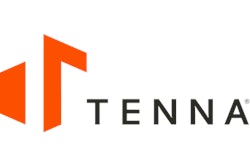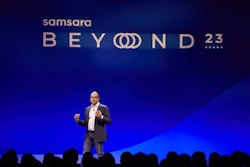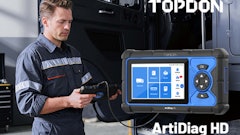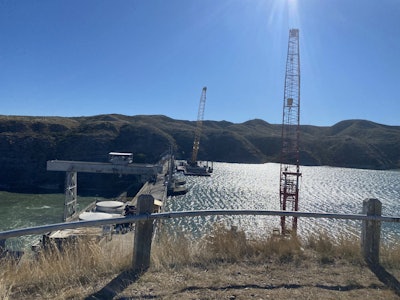
While the construction industry is sometimes at odds with the environment, and must take care to prevent impacts to water resources through the use of everything from wetlands delineations to silt fences to spraying anionic polyacrylamide on dirt piles, design-build teams of engineers and construction professionals at Boise, Idaho-based McMillen Corp. face the additional challenge of working on projects directly in waterways—renewable power, dams, spillways, fish ladders, in-stream habitat improvements, reservoir outlets and more.
The company is involved in early stages of environmental studies, permitting, civil engineering and project design. But they also self-perform many construction tasks, which means they rely on a $6 million fleet of construction equipment and other vehicles ranging from a hydrocrawler, six boats, barges, boom trucks, a half dozen excavators, dozers, telehandlers and skid steers.
“We don’t have that large of a fleet,” McMillen Equipment Manager Christopher Schauer said. “Last year was about getting started doing full-frame rebuilds on our existing machines, but this coming year we will be growing the fleet.”
While McMillen may be buying more new equipment soon, since joining the company in August of 2021 and implementing GPS-enabled asset management software from Tenna in February of 2022, Schauer’s team has focused on getting more value out of the existing fleet, leaning on maintenance and operations history from Tenna to inform the process. The company had evaluated HCSS Equipment360, but Schauer was also intrigued by CAT’s Visionlink and the United Rentals API. Their decision, he said, was ultimately based on the software to meet their needs across a mixed fleet with robust telematics and computerized maintenance management systems (CMMS) capabilities.
When ForConstructionPros caught up with Schauer in January, he was at a McMillen facility where his team was rebuilding a Caterpillar 289 skid steer.
“This is a D series model—which the last generation,” Schauer said. “They are now moved on to the D3s. But when I look at our machines, they are sitting at about half life. How I generally look at a piece of equipment is to take stock of where in its life cycle, and about 4,800 hours of operations is halfway through its useful life. If I talk to our CAT salesperson, they will tell me to get a new one.”
But having come to McMillen from a stint as equipment manager for Kiewit, Schauer was accustomed to taking equipment into higher hours and sweating the assets.
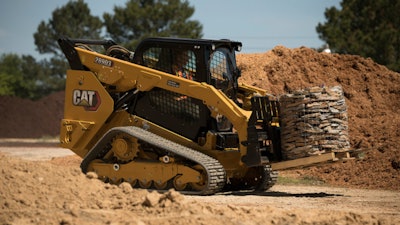 All D3 Series CTLs feature standard two-speed travel. The 279D3 and 289D3 loaders boast an 8.4-mph top-end ground speed, a 20% increase over their D Series counterparts. The 239D3 and 249D3 are now built with a two-speed transmission as standard, increasing travel speed by 9% and aligning these models with the rest of the two-speed-equipped CTL model range.Caterpillar
All D3 Series CTLs feature standard two-speed travel. The 279D3 and 289D3 loaders boast an 8.4-mph top-end ground speed, a 20% increase over their D Series counterparts. The 239D3 and 249D3 are now built with a two-speed transmission as standard, increasing travel speed by 9% and aligning these models with the rest of the two-speed-equipped CTL model range.Caterpillar
“At Kiewitt, we took a longer and in depth look at where the repairs are in terms of the returns on investing more in a piece of equipment,” Schauer said. “So I know, personally speaking, these skid steers can go 10,000 hours. Hardly anybody does that, but I know you can do it.”
While some companies may not have the staffing to complete the necessary rebuilds, which may include everything from line boring to bushings and bearings, Schauer said the work itself could be outsourced. The challenge is the visibility to balance productivity with cost for parts, materials and staffing.
“If you are a smaller company, you may dump these skid steers at 4,000 to 5,000 hours, before they have issues,” Schauer said. “Maintenance will start to creep up in cost. But many times they are spending so much money paying the creditors and the banks for these new units they are not actually coming out ahead. We want to get everything we profitably can out of equipment.”
A full asset life-cycle approach to equipment maintenance is, in even many large and complex companies with much more tied up in capital assets, an aspirational idea. Between a reactive maintenance culture and a lack of enterprise systems that can support financial decision making about equipment, a full life-cycle approach to any type of asset is rare.
“It is something people talk about idly,” Schauer said. “Like, it would be so nice to do. But to do it and stay on top of it takes some dedication to making this program work.”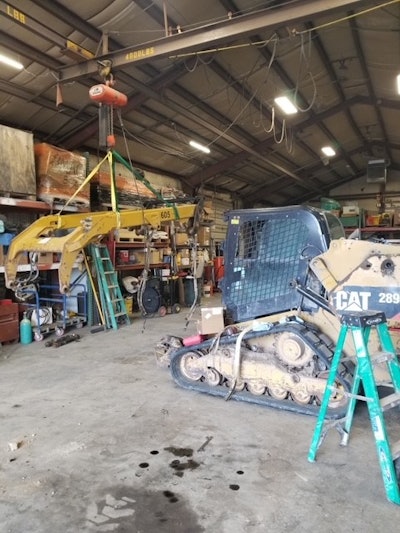 A Cat 286 under an overhaul that will get it on its way to 10,000 hours.McMillen Corp.
A Cat 286 under an overhaul that will get it on its way to 10,000 hours.McMillen Corp.
Success in full asset life-cycle management is less about the size of a team or company and more about structure and data visibility.
“You need to have a centralized equipment structure,” Schauer said. “If you are relying on the project managers themselves to handle maintenance on equipment used on their project, it just won’t happen. It has to be centralized in order to have one person responsible for the fleet. Otherwise, the numbers do not get to the same point. Five people will never cross-compare numbers together to know what they need to do with a machine. Centralization verses decentralized equipment management is one step. Even if you are a landscaping company—and I use that as an example because they are picked on for being small and unsophisticated—can do this if they have someone who is knowledgeable. They don’t need a full-time staff member doing it doing the overhauls and the work—that can be outsourced. You just need someone who is aware of it and has equipment as their responsibility. There is more emphasis put on it in the larger organizations because the numbers get larger faster.”
Multiple Data Streams
One challenge in achieving an asset life-cycle approach is the fact that it requires visibility not just into the equipment itself, including a full maintenance history, but the project activity through which each piece of equipment drives value. This means that utilization data from telematics units installed on equipment is crucial. This data must not only be harvested from the piece of equipment, but also exposed in an application that supports financial decision making by placing it in context with other factors.
“Utilization is key—and telematics is the only avenue into that realm to really track it,” Schauer said. “It doesn’t make sense to own a 349 excavator if it only runs 5% of its life. It is a huge waste of capital. If a skid steer is used 75-95 percent of time, you can justify the capital investment and also justify investing more in keeping it operational.”
Decisions about the equipment then cascade into other parts of the business, including spares and repairs parts ordering and staffing levels for maintenance technicians.
“It absolutely drives how many mechanics we assign to projects,” Schauer said. “We rely on maintenance man-hours factors to determine how many maintenance hours we expend per hour of operation. We then use those numbers to figure out the number of mechanics, how many tracks we are going to have available, up to and including hose connections to service the scraper fleet. With Tenna we are not just shooting from the hip and guessing.”
Tenna Viewpoint/Spectrum Integration
Apart from insight into the equipment, which comes from utilization and other data collected from telematics at the tip of the spear, McMillen and Schauer have access to hard cost data from their back-office accounting application, Trimble Viewpoint Spectrum. This comes thanks to a recently expanded integration, created by integration platform as a service (iPaaS) vendor Ryvit, which in January of 2023 was acquired by Trimble.
A work order, which contains information on maintenance activities and parts and materials consumed against equipment, and associated mechanic labor is created in Tenna. This new unidirectional integration with Viewpoint Vista then passes that information on to the ERP when created in Tenna, automatically creating a record of the work order in that application to record the costs associated with the parts, labor and consumables from the work order in Tenna, enabling full asset life-cycle management cost for construction equipment. Tenna sends an update to Vista when the work order is completed, updating final total notes accordingly.
“We already integrated with Viewpoint Vista, (hosted or within Viewpoint One) and Spectrum,” Tenna Co-founder and Vice President of Product Jose Cueva told ForConstructionPros at the time of the expanded integration launch. “We also integrate with other ERP and accounting software products, including Sage 100 Contractor and Sage 300 Construction and Real Estate, Coins, Foundation and Fleet Cost & Care. These integrations focus on equipment location, usage and mileage. This new and deeper integration with Viewpoint Vista though is the first that exposes our maintenance work order functionality to an ERP product.”
While Schauer said his was one of the first teams using the integration, and implementation involved some back and forth with Tenna,
Now that the integration is up and running, estimating its value to McMillen would be difficult, according to Schauer.
“It is priceless,” Schauer said. “To put a dollar value on it, it would be in the realm of every rebuild I do being directly attributed to that integration. Doubling the life of any unit can be attributed to that integration, Before I joined and we implemented Tenna, everything was handled by the recommendation of the dealership. They did not perform rebuilds. It would just be a tradeoff and a sale. A lot of value was lost.”
“This integration, like Tenna and Trimble-Viewpoint’s greater partnership, solves a multi-million-dollar business need for contractors, making it easier for them to see where they are bleeding capital and helps them get better control over how they leverage their current resources to ultimately benefit the books,” Tenna Chief Business Development Officer Russ Young said. “Knowing more by seeing data clearly within the integrated systems and being able to better account for equipment costs and investments allows contractors to take strategic actions to own less, rent less, better maintain and optimize what they have, and deliver work more with less downtime, which leads to increased project margins and higher revenue.”
Without the integration, executing a proper equipment rebuild would require physically going to the machine to collect an in depth history, including researching old invoices from previous repairs. But with machine health, utilization, maintenance history and past and projected cost on a single pane of glass, McMillen has a comprehensive tool for equipment life-cycle decision support.
“Before, it was ‘how is this 336 doing,’ and I would say ‘I don’t know.’ The difference is a few minutes versus a few weeks’ worth of work to come to an understanding of where that machine is in its life cycle.”
Stakeholder Support
Not only does equipment life-cycle cost and condition transparency help with a finance-based approach to asset management, but it enables McMillen to provide a better experience to project stakeholders.
“We deal with Army Corps of Engineers, and that requires quite a bit of paperwork backup,” Schauer said. “On several projects, it requires vehicle and equipment inspections. I can quickly pull and send them reports on where we are with our vehicle and equipment inspections so they know we are not faking it.”
And with a robust enterprise approach to asset management, McMillen can prevent equipment downtime from affecting project schedules.
“Visibility is the hardest hurdle to tackle when it comes to scheduling in the construction field,” Schauer said. “I know as soon as something goes wrong with a piece of equipment, and I know before the project manager knows. That means I am three steps ahead before it can turn into a dumpster fire. When the project manager hears of an equipment issue and comes to you, you’re already on the horn to rental house and arranging a replacement. When the project manager calls you with his hair on fire, you can tell him you know about it and are on top of it.”
Evolving for the Future
While Schauer’s approach to equipment refits focus largely on extending the life cycle—replacing bushings, bearings and line boring, his team is also retrofit units for Trimble level and grade control components.
“On this machine we are working on today, we are adding the ability to run the Trimble grade control so when we attach a box plate to the front of it can do smaller spoke pads,” Schauer said. “When I started, 10% of our machines were Trimble-equipped and we are getting closer to 25-30% integrated with grade control. We can assign time to these work orders and our backlog so we can preplan and know roughly what the work is going to take so we can workforce-plan. All of that is based in Tenna.”




